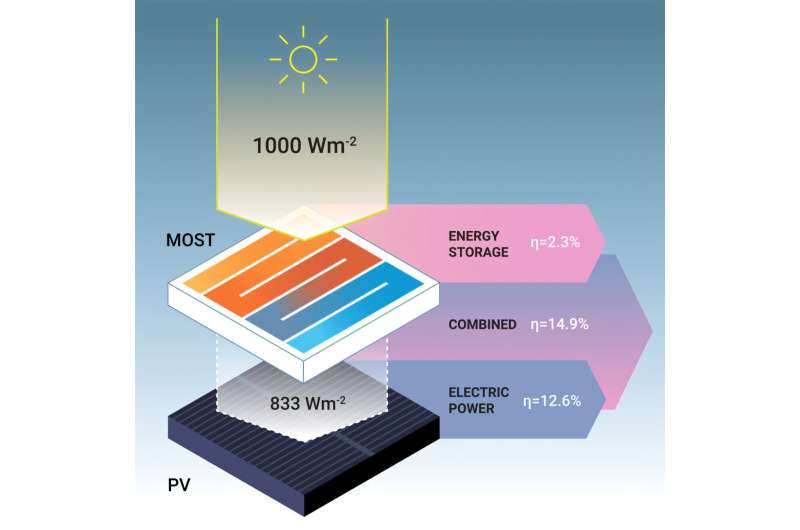Achieving a record 2.3% energy storage efficiency and 14.9% total solar utilization, this breakthrough promises to boost renewable energy performance while reducing reliance on unsustainable battery materials.

An international research team led by Universitat Politècnica de Catalunya—BarcelonaTech (UPC) has unveiled a hybrid device that integrates molecular solar thermal (MOST) energy storage with silicon-based photovoltaic (PV) technology. This approach achieves a record energy storage efficiency of 2.3% and an impressive 14.9% total solar energy utilization.
Solar power plays a crucial role in the renewable energy transition, yet intermittency issues and thermal inefficiencies hinder its widespread adoption. Conventional storage solutions, such as batteries, depend on unsustainable materials and often degrade over time due to heat exposure, reducing overall efficiency.
Led by ICREA professor Kasper Moth-Poulsen from UPC’s Department of Chemical Engineering, the research team has developed a first-of-its-kind hybrid system that overcomes both storage and efficiency challenges. Their findings showcase a device that enhances energy storage while simultaneously reducing PV cell overheating.
How the Hybrid Solar Device Works
At the core of this innovation is the MOST system—a molecular storage technology utilizing organic compounds that absorb high-energy photons (e.g., ultraviolet light), triggering a chemical transformation to store energy for later use. This dual-function system not only captures and retains solar energy but also acts as an optical filter, reducing excess heat that would otherwise degrade PV efficiency.

By integrating MOST with silicon solar cells, the hybrid device lowers PV temperatures by up to 8°C, mitigating energy losses and boosting efficiency by 12.6%. The combined system achieves a remarkable 14.9% solar utilization efficiency, surpassing the performance of traditional independent solar technologies.
This hybrid solar innovation marks a significant step toward more efficient, durable, and eco-friendly renewable energy solutions. By reducing dependence on rare and polluting battery materials, this technology has the potential to accelerate the transition away from fossil fuels while offering a sustainable alternative for energy storage.








